Using The Ruth Stout Gardening
I have heard that if you mulch like Ruth did in the South you would get a build up of bugs in the mulch. The first year or two they eat the mulch but then they start eating your planted crops. I have read in this forum of people having trouble with these bugs. I like the idea of a lot of mulch but I dont want to cause a problem being I live in a Hot Humid Climate in the summer.As usual any help would be appreciated. Red
Comments (33)
Okiedawn OK Zone 7
14 years agolast modified: 9 years agoRed,
I love the Ruth Stout method and it has revolutionized my gardening life. I didn't start doing heavy mulch gardening until we moved to Oklahoma in 1999, and I wish I'd started using it way before that.
I mulch everything heavily and the only bugs that are a real issue for me are pill bugs/sow bugs or, as we referred to them as children, roly-poly bugs. No matter what kind of mulch I use....hay, straw, grass clippings, hardwood trimmings, etc., the roly poly bugs live in the mulch and they love to munch on seedlings. They especially like young marigold and bean plans, but I've also had them eat and kill young tomato seedlings early in the season, and they do like to eat tomatoes later in the season.
There are several ways to combat roly poly bugs, and I normally use an organic product called Slug-Go Plus. I used Slug-Go first because anecdotal reports stated that its active ingredient (iron phosphate) killed not only snails and slugs, but also roly poly bugs. I bought some, used it, and it worked, which was a great relief.
I guess the product manufacturer reads a lot of these threads and learned a lot of gardeners were using Slug-Go for pill bugs so they did some research and development and came up with Slug-Go Plus, which has one additional ingredient (a naturally occurring soil bacteria called spinosad) and is effective on slugs, snails, pill bugs and sow bugs (and some other bugs, but I don't have them here so can't say if it works on them or not).
It is specifically the iron phosphate in Slug-Go and the iron phosphate and spinosad in Slug-Go Plus that kills the pests, so be sure you buy an organic product that contains these ingredients and not the chemical form of slug and snail killer that contains metaldahyde.
By the way, the most effective organic fire ant killer product I've ever used has been from the Safer organic line and it contains spinosad too.
I don't know what kinds of bugs other people have in their mulch beds, but I don't have many harmful ones. I do have a lot of ground beetles, but they tend to be beneficial in the garden and help keep the bad bugs under control. Sometimes I find crickets, Morman crickets or grasshoppers in the mulch, but not that often. In general, my guineas and chickens keep the crickets and hoppers pretty much under control and, if the cricket/hopper population surges and is too much for them, I just put out Nolo Bait in the April/May time frame and that takes care of the young instars in the locust family.
Mulch gardening keeps your soil so moist and cool compared to gardening with exposed soil, and that's important to me because I have clay soil that gets so dry that it won't absorb water....without mulch, the water just runs down hill off the garden beds.
Another advantage of the Ruth Stout method is that your garden beds do not fill up with weeds. In the spring, all you have to do is rake back the mulch, plant, and then put the mulch back around the young plants.
In my garden, I have all kinds of bugs but seldom have any significant pest damage to my plants. I do all I can to encourage the good bugs to stick around and they take care of the bad bugs for me.
The people I know who have the worst problems with insects are those who apply heavy doses of chemical insecticides. The insecticides kill the bad bugs (herbivores who eat the plants) and the good bugs (carnivores or omnivores who eat or otherwise kill the bad bugs), but the bad bugs rebound first and are out-of-control and doing damage until the good bugs build up good populations again. I don't use chemical pesticides at all in the veggie garden or flower beds and seldom lose a plant (or even a fruit or veggie) to a bug infestation.
I think the Ruth Stout mulch method is great and does not contribute to an excessively large bug population as long as you take the right steps to encourage a good population of beneficial insects.
In the winter, I turn the chickens loose in the garden and they dig and scratch to their heart's content, turning over that mulch and carefully removing every bug they find.
I do have to be very careful with handling the mulch during the hot season because we have a lot of venomous snakes here and they like to hide in the mulch.
Dawn
Here is a link that might be useful: Slug-Go Plus
chao
Original Author14 years agolast modified: 9 years agoDawn sounds like your poultry might be a big help in the winter lowering the bug population .Thanks for the advice about the Slug-Go Plus. Do you also make compost or just let the mulch break down where it is.Red
Related Professionals
Forest Park Landscape Architects & Landscape Designers · Manorville Landscape Architects & Landscape Designers · Vernon Hills Landscape Architects & Landscape Designers · Wakefield Landscape Contractors · Deerfield Beach Landscape Contractors · Eustis Landscape Contractors · Lewisville Landscape Contractors · Mendota Heights Landscape Contractors · Paso Robles Landscape Contractors · Pleasanton Landscape Contractors · Weymouth Landscape Contractors · Fort Pierce Decks, Patios & Outdoor Enclosures · Jackson Decks, Patios & Outdoor Enclosures · Reading Decks, Patios & Outdoor Enclosures · Statesville Decks, Patios & Outdoor EnclosuresOkiedawn OK Zone 7
14 years agolast modified: 9 years agoRed,
I make some compost but in order to have enough for my large garden, I always count on the mulch to break down and turn into compost right there in the beds. It sure is a lot easier to have composting happening right there where the compost is needed--that way I don't have to shovel the stuff into a wheelbarrow and haul it from the compost pile to the garden.
My compost pile catches the kitchen scraps, old plants and cornstalks once the harvest is over, weeds I pull from the garden beds, grass clippings, chopped and shredded leaves in the fall, straw/chicken manure from the henhouse floor, etc.
After you've mulched a bed for several years and let the mulch decompose in place, you won't believe the difference in the soil. We've been here 11 years now, and the beds I built early on and mulched regularly now have dark brown sandy loam instead of red clay. To me, that is nothing short of a miracle! I'm sure the red clay is down there somewhere, but I don't dig deep enough to hit it any more.
Dawn
chao
Original Author14 years agolast modified: 9 years agoDawn that sure sounds better than all that composting. I just planted about an acre of Iron Clay peas I want to use them to build up some beds. Also hoping to plant 1/2 acre in velvet beans and corn. Got a friend ( might not be later) that has a good bit of old hay.As usual I have bit off more than I can chew. But if I can keep plugging it will be better next year. Thank You so much. Red
hank1949
14 years agolast modified: 9 years agoI've got earwigs everywhere this year. Can't remember old Sluggo being effective on earwigs. Is the new Sluggo Plus good on earwigs then?
Hank
Okiedawn OK Zone 7
14 years agolast modified: 9 years agoRed,
You're welcome. It sounds like you are very, very busy.
Jay,
You and I are so alike in our gardening preferences that I am beginning to think we are gardening twins who were separated at birth. I was doing the Ruth Stout method long before I heard of her too, and I thought I had found a "new" way to essentially compost in place. Then I got around to reading one of her old books and learned my "new" way was actually a very old one.
I forgot to mention the earthworms and am glad you brought them up. Since I began mulching heavily, I have so many earthworms that it is amazing. To me, earthworms are a "sign" of healthy soil because you rarely see many of them in soil that is extremely low in organic material and that is not mulched.
A lot of people go to a lot of trouble to do vermicomposting in bins, but I prefer my earthworms right there in the ground doing their own thing in the most natural way possible.
Hank,
I have never seen an earwig in my life, so I can't say if the Slug-Go Plus works on them, but the manufacturer says it does, so that's good enough for me. The firm that makes Slug-Go Plus is quite reputable and I have never known them to make a false claim. I hope you'll try it for your earwigs and let us know if it works for you because that's how we all learn and grow (pun intended) as gardeners.
Spinosad has shown remarkable results in my garden and I almost (but not quite) consider it to be almost miraculous in that it targets some pests that are very hard to fight without the use of dangerous, broad-spectrum chemical pesticides. (Some of them do not even respond to the harsh chemical pesticides because they have developed resistance to them.) I have tried spinosad for various pests and it seems to reduce or eliminate the population of many of them.
Dawn
shekanahh
14 years agolast modified: 9 years agoI would love to use the Ruth Stout garden method, but I don't think it will work for me due to how wet my main garden gets during spring rains. But, I am thinking perhaps I do need to give up tilling for the most part. That maybe it's the wrong thing to do by destroying soil composition.
I rather like the idea of the lasagna gardening techniques combined with heavy mulching and cover crops. The more you read here the more you learn. I can hardly keep up with it all!
Shekanahh
gldno1
14 years agolast modified: 9 years agoShekanahh, you know, it might even improve the wet problem for you. As the times goes by the more layers you add would raise the level of the garden. Most roots would be growing in the uppper 6 inches of the soil and the water would have drained down...just a thought. The only issue is always having a good source of additional mulch.
Now my first experiment with the lasagna method, I just used paper feed sacks and a "brick" of spoiled alfalfa hay left from dairying. The whole thing was just 4 inches thick. I didn't add soil or compost and then layer again. The next spring at each corner of the hay slabs or bricks, I made a hole and planted the tomatoes. The stuff was beautiful and full of earthworms in just one season. I am remulching that bed this year. The mulch of hay has almost disappeared.
The beauty also is NO WEEDS AT ALL!
Okiedawn OK Zone 7
14 years agolast modified: 9 years agoGlenda,
I feel exactly the way you do--that the Ruth Stout method probably would lead to better soil composition and better drainage.
Shekannah,
Lasagna gardening, in my opinion, is just a speedier form of Ruth Stout's method. Ruth just piled on the straw and let it decompose and lasagna gardening has you pile on a myriad of materials that are basically already composted.
I can't imagine your garden drains worse than mine. I have heavy, thick, red clay that drains so slowly it wouldn't pass a perc test for a septic system so we had to have a lagoon instead of lateral lines. We've now had 19" of rain in the last 35 days and I have relatively little standing water although, of course, some areas are very wet underground. I haven't lost many plants at all though, including those planted in barely improved clay.
So if your soil is draining really, really, really slower than mine, I have to wonder if you have a high water table beneath your property, or live on the shores of a lake?
Either way, I think the Ruth Stout method would help you a lot in the long run, although you might not like it as much the first year or two while you waited for some of the mulch to break down and begin enriching the soil.
Dawn
elkwc
14 years agolast modified: 9 years agoGlenda and Dawn I feel the same way you both do. When I first started I did add some fertilizer when the plants needed it. It can even be a foliar feed if you desire. Another way is to start adding and make a raised bed of sorts as you add mulch. This will make a nice bed to plant in and will drain a lot better. Dawn can help more on the draining as all my gardening experience has been in sandy soil. The sand has varied in depth but always has drained well. The mulch has helped with moisture retention in my soil. My sister's garden is tight ground and have helped her. Due to bind weed problems they use containers and old tanks now. I personally feel from my experiences and those others have shared with me it will help any garden. Like I said when you start you can just prepare like normal and add your mulch, compost and ect on top. Jay
soonergrandmom
14 years agolast modified: 9 years agoDawn,......and the difference between a cricket and a Mormon cricket is..............????
Okiedawn OK Zone 7
14 years agolast modified: 9 years agoCarol,
Mormon Crickets are not really crickets--they actually are shieldbacked katydids. (Hey, I didn't name them. OK? LOL) Their population seems to ebb and flow and seems to peak less often than that of grasshoppers. Like grasshoppers, they are migratory and cannabilistic.
The Mormon Crickets tend to have extremely high populations in dry areas, especially in areas with a lot of sagebrush. I believe they are an especially vexing problem in Utah and Nevada, and probably the surrounding states as well.
I see them here but not in huge numbers, although they are worst in drought years, and we've had a lot of those lately. And, if they are a problem for anyone, Nolo Bait or Semasphore work about as well on them as they do on grasshoppers.
By the way, they were called Mormon crickets because they were a huge issue when the Mormons built their first settlement in what is now Utah. The Mormon crickets were devastating the Mormon's wheat crop, which threatened their ability to survive the winter. Then, California gulls swooped in and devoured the shieldbacked katydids, and they've been known since then as Mormon crickets. Not only do gulls feast on Mormon crickets, so do coyotes (oddly enough).
Dawnshekanahh
14 years agolast modified: 9 years agoDawn, Glenda and Jay..
I'm on it! I hauled home as much cardboard as I could stack in my vehicle, and got at least 25 ft laid down, with some mostly composted grass clippings to hold it down, just before the rain hit. I have quite a bit more compost and partically digested compost materials I can add as I go along.
This is going to take quite a while to build up, but I figure each trip to town which is about every day, I can accumulate more cardboard, and just keep adding it to other areas as I plant. I love this idea SO much, and I can imagine what it's going to do for my garden.Glenda, I think you are right about this method being able to raise the level of my garden. If I can manage to raise it another 8 inches, I think I'll have the wetness problem whipped.
Dawn, the problem with the way my main garden area lays is that it's at the bottom of a slope. Compounding the problem is that the garden portion is like a shallow bowl that catches all the run-off and holds it. During torential rains, like this spring, I have seen what looks like a flash flood sweeping down the slope and running rapidly across the garden area, and then inevitably some of it just sits there, and I have to literally wade to get to my asparagus patch. Then rain after rain keeps it that way until the rains stop and warm weather sets in. Spring gardening in that area has been hopeless!
Right now, what I am doing is making berms along the bottom of the slope to divert the run off, as well as digging a few trenches to allow a way for the excess water to escape.
Good LORD willing and the creek don't rise, (again)...by next spring I will not only have the run off problem corrected, but a good start on a lasagna bed, raising the level several inches. As large as my main garden area is, that's gonna take some time.
By the way, since I am just now getting ready to plant squashes, melons and tomatoes, cukes, etc, I figured I might be able to cut saucer shaped holes in cardboard and plant inside of those, and keep them mulched as they grow.
Anything to cut down on the work load, weeding and watering while at the same time continuing to build an even richer soil would be such a wonderful blessing to me.
That part of the garden has been SO wet in the spring that there is not one single earthworm to be found as in other higher parts of my place. They would all drown! I am looking forward to populating them in there this summer! I really value their activity in the soil. I don't know why my soil is as good as it is, inspite of the wetness problems I've had, but I am looking forward to a much more productive and easily managed garden area. I might even be able to retire that tiller.
Jay, I spent one summer in Great Plains, TX. home of very sandy soil, plus LOTS of rattlesnakes, and copperheads. I really loved the sandy soil to grow in. Even though it took a lot to keep it watered, I had well water, and the root sytems on those plants were amazing and everything grew so well.
I have driven through the Panhandle lots of times on my way either to New Mexico, Colorado or Wyoming. Amazing country. I continue to love every part of our state.
Thanks all, for your great advice. You can be sure I treasure every nugget of it!
Shekanahh
soonergrandmom
14 years agolast modified: 9 years agoThis is too funny Dawn. I will have to be careful to word this very carefully because I guess my last message got caught and didn't post. You can not say anything political or religious on GardenWeb or it gets cut. Ask me how I know.
I answered you and said I had visions of them showing up on your front porch in white shirts and ties, and the message got cut. LOL
Okiedawn OK Zone 7
14 years agolast modified: 9 years agoShekannah,
Our yard/garden slopes in a similar way as the neighbor's property sits about 4' higher than ours. On the day in April that the 12" of rain fell, pretty much our entire 300' long gravel driveway washed into the bar ditch as a whole ocean of water ran from the neighbor's place down onto ours. Much of my soil and mulch washed out of the raised beds (which are at the upper end of the garden) and down into the grade-level Three Sisters patch at the lower bowl-type portion of the garden. The corn bed (beans and squash weren't planted yet when the rain fell) picked up 4-6" of soil/mulch on top of the previous mulch. It is a real mess. We were luckier than many folks who had fences wash out, although we did have soil washed away from the concrete holding the fence posts in place.
I need to build raised beds in that lower part of the garden too....just ran out of energy before I got around to doing it and ended up putting those raised beds on the one-of-these-days list. Since that lower part of the bed is closest to the woodland and I have the ever-worsening problem of encroaching tree roots, I don't know if I'll ever build raised beds there or build some elsewhere instead.
Dawn
gldno1
14 years agolast modified: 9 years agoDawn, I know you are aware of this, but be very careful about building raised beds where the tree drip-line is. The previous owners had built one near an Ash tree and you couldn't dig in it for the fibrous roots that had grown "up" into the bed! I eliminated it quickly.
Macmex
14 years agolast modified: 9 years agoMy dad used to purchase 50 bales of straw to mulch then entire garden, when I was a kid. Every year we'd start out with 8 inches of fluffy mulch over the whole thing. It worked well. By the time I left for college we had over 4' of rich black top soil. I could push a spade into the ground right up to the handle. (Keep in mind this was NJ where land fill soil is better than the best soil in much of the rest of the country).
Last winter I tried two things. When leaves were readily available I did a real deep mulch in part of my garden... and left it there. This spring I planted through it. It's working a lot like my dad's purchased hay bales. Also, all during the fall and winter, whenever we cleaned out the goat pens (spoiled hay, manure, etc.) I piled it about 2' deep, in a large rectangular swath of the main garden. It is still almost a foot deep. This spring I sent right down the middle and planted our winter squash, cantalope and watermelons there. Everything seems to be doing fabulous, except one hill of cantaloupe, which is yellow and stunted. They must be sitting on top of something they really don't like.
The problem with compost piles I've done here, in Tahlequah, is that they are overrun with Bermuda by the time the compost is finished. So our composting largely takes place "en sitio," right in the garden, as mulch.
George
gamebird
14 years agolast modified: 9 years agoAh, something to encourage me in mulching my entire back garden! I have finally finished mulching around the fruit trees, so they all have about 4 foot radius of 4-6" thick wood chips. I have also finished mulching around my melon hills, which is a foot or two wide ring of horse manure and bedding 2-4" thick. I'd been considering getting more wood chip mulch and putting it thick on top of everything else; a job made much easier by access to a dump trailer to get the mulch and a front-end loader to move it. This thread encourages me to continue on with that plan. My soil can really use improvement!
"The problem with compost piles I've done here, in Tahlequah, is that they are overrun with Bermuda by the time the compost is finished."
Huh. The problem with my compost piles is always that they're overrun with acorn squash. Not that it's a big problem, but it does prevent me from turning the pile like I should. Right now I have three squash plants growing from it and I figure they're acorn. I hope they are, at least. I like acorn squash and didn't save any seed. Never have, since for the last three years I could always depend on it growing out of my compost pile without me having to go to the effort. It's a constant battle with the SVBs to see if the plants produce much, but they always manage to produce something.
Okiedawn OK Zone 7
14 years agolast modified: 9 years agoCarol, When I started to answer your question about the Mormom Crickets, Tim was sitting here making all kinds of jokes. He thought he was pretty funny. You can just imagine. LOL
Glenda, We have 14.5 acres, of which about 10 or 11 acres is heavily wooded. Very heavily wooded....as in almost impenetrable. We built the house, outbuildings and gardens in the open, sunny areas, but the trees are encroaching from the north of the garden. I have always had a problem with tree root encroachment even though the tree's drip lines are still about 10' from the garden. (They were much further away 10 years ago.) I'm tempted to take out some of the trees near the garden even though, in general, I don't like to remove healthy trees. Mother Nature has helped me by taking out two of the trees in a severe T-storm last year, and DH and I cut down a hackberry that was getting too close to the garden 3 years ago.
I think we need to just bite the bullet and take out several trees that are closest to the garden and then keep new ones from sprouting in that area. So many people come in here with bulldozers and remove huge numbers of trees before building (then, after they build, they plant dinky little trees to replace the huge ones they took out), and I certainly don't want to do that. However, it is hard to have a nice garden when the trees and their thirsty roots creep closer and closer every year. I fought shade and tree roots when we lived in Texas and I don't like having to fight them here.
I am pretty ruthless when I encounter any tree roots in the veggie garden and dig them out. They just keep coming back of course, so it is an endless battle.
George, I love the leaves and they really have helped build our soil and change it from rock-hard brick-red clay to luscious brown loamy clay. I used them extremely heavily the first 4 or 5 years, but use them more in moderation now (simply because I am using more of them now to improve flower bed soil). I think you can improve soil using nothing more than leaves. In our woodland area which is probably about 70 years old according to some local old timers who tell me they can remember when there were "no trees" here, there's about 8-10" of nice brown loam on top of thick red clay and I am sure the leaves are largely responsible for that.
There's three ways I've kept the bermuda out of the compost piles in recent years. (I didn't have much success the first few years here, and you know that if you lose control, the bermuda wins, so it won a few of those battles.) One pile is in a 6-8' deep 'pit' cut into the side of a hill, so the pit is enclosed on three side by clay soil and open on the fourth. It is about 8 feet deep. They bermuda doesn't venture into the pit, not even on the open side. A second pile is in a pasture we very seldom mow (maybe once or twice a year), so the native grasses outcompete the bermuda. The third pile has several layers of thick cardboard under it, but I have to renew that cardboard every year when I take out the compost to use it. I also have to weed-eat regularly or the bermuda encroaches from the side.
Gamebird, Some of our best pumpkins and winter squash routinely sprout in the compost piles and I just leave them there. It is always nice to have extra plants if the SVBs get all the ones in the garden (sometimes they do, sometimes they don't).
As time goes on, I mulch and mulch and mulch more areas. I improve one area at a time through adding compost and mulching and that area gets annual plants for a few years until I feel like I have "good enough" soil there to plant shrubs, trees and perennials. Over time, we've removed a lot of bermuda grass that way, and I'm removing a large section of bermuda grass this week and replacing it with annuals and perennials. I actually had annual flowers in this area for about 3 or 4 years until three years ago but let it revert to grass during the 2005-2006 drought when I had more area to water than I could afford to water. (We did keep the acre around the house watered that year, but that was all.) This year, I am taking back that area and hope the soil is finally improved enough that the plants won't need irrigation after they are established. There are times when I wish we'd just mulched the whole "yard" with 8-10" of mulch while the house was being built, but that would have been cost-prohibitive at a time when we were spending a lot of money doing other stuff.
My goal is to get rid of all the bermuda. And, by the way, we didn't even have any visable bermuda when we bought this fallow cow pasture and woodland. After we mowed the grass short in the area where the house would be built, though, the bermuda quickly appeared. One of my old farmer neighbors stopped by one day and commented on how "lucky" we were to have that bermuda grass making a comeback and I had to bite my tongue to keep from responding "You mean unlucky, right?" LOL
Dawn
gldno1
14 years agolast modified: 9 years agogamebird, you need to get Ruth's No Work Garden book from the library. She didn't turn compost piles. In fact, she quit making them. Her whole garden became one big compost pile.
I do the same. I just lift some mulch and toss on kitchen waste and cover the more mulch. If I get in a hurry, I just toss it over the fence inside the garden and once in a while, shovel some dirt from the base up on top to hide the uglies.
My best strawberries are growing around the base! and the odd potato sprouted from peelings. But I never ever turn it! I love lazy gardening.Add me to the list of Bermuda Grass haters! I had none when we moved to the adjoining farm in 1991. Now it is in lots of places. I am struggling to keep it out of the garden proper and flower beds..........herbicide just encourage it.
When I hear about southerners planting it, I am stunned.
elkwc
14 years agolast modified: 9 years agoI'm attaching a link to one of the articles about the bermuda grass OSU is developing and growing. Have heard several recreation departments are either trying it or looking at it. Here many of us fight it constantly and others buy seed to grow it. What a world we live in. Jay
Here is a link that might be useful: OSU Bermuda Grass
Macmex
14 years agolast modified: 9 years agoI struggle, as I never have enough mulch to get everything mulched. But I keep working at it. The place often looks like a dump, since I have bags of leaves around, waiting to be put down. They are waiting, since the places I want to put them have plants which are still too small and might get swallowed up by the leaves.
What seems to have really worked was, last winter, when I had LOTS & LOTS of leaves, I just laid down about two feet of them in one area of the garden. They settled very well, by spring, and it has been a snap to part the leaves and plant. Weeds which have surfaced (even Bermuda) have been easy to remove. Worms abound. I'm going to do a lot more of this in the fall!
I do believe I'm gaining on the Bermuda, at least in the main garden. Now, when weeds get out of hand, they are predominantly not Bermuda. One thing which has helped me in the "Bermuda battle" is what our local extension agent told me a couple of years ago, "Bermuda can be shaded out." I've found that corn, for instance, is a great Bermuda weapon. It shades it, and, the following season what is left of the Bermuda, is easy to eradicate.
I hope it's not too late. I planted my peanuts yesterday. I'd resolved that if I didn't get them planted, that I was DONE with peanuts. Every year I struggle to get them in, and I don't want to be purchasing seed all the time.
I actually "got artistic" planting my peanuts in curving rows and filling a little leftover hollow with zinnias.
George
Okiedawn OK Zone 7
14 years agolast modified: 9 years agoGeorge,
I love leaves. I took all the leaves I could gather from our woodland for the first 5 or 6 years we were here, but then I felt guilty about taking so many from the woodland that I started leaving them there. This coming winter, though, I am going to gather a lot. Maybe I'll start doing it on a rotating basis....only taking the leaves from the woodlands every other year, or from a part of the woodlands every year. Of course, any leaves that fall on the lawn areas near the house are "mine".
We are in our 11th year here, and my long-term strategy of shading out the bermuda is starting to show results. The trees and shrubs we planted 9, 10 or 11 years ago are now large enough that the bermuda grass in those areas is thinning out significantly and I am beginning to replace it with ever-enlarging borders of shrubs, ground covers, and perennials (and a few reseeding annuals) that can grow in semi-shade or dappled shade. This week, we've been taking out bermuda in an area that's about 40' by 20' and I'm still raking out and removing roots, but almost ready to start planting in this area. After that I have three more areas where increasing shade is leading to "bermuda replacement" so this is going to be the summer we remove a lot of bermuda grass.....finally! I am so happy about this. My ultimate goal is that by the time Tim retires, we won't have a huge area to mow, but instead will just have lovely, mulched, low-maintenance areas.
Like you, I have noticed that as the soil improves and as I mulch more and more and more, I see less of a lot of weeds that we once had. So, I guess that's progress. I still have too much bermuda grass on the east side of the veggie garden (and Johnson Grass too) but am sure we'll win that battle eventually.
You must be catching up on everything if you have the time to start being artistic! I like the idea of zinnias with peanuts. Love County used to be a big peanut area, but once the government dropped the price supports, all that stopped and almost no one grows peanuts here any more except for their own use.
Dawn
elkwc
14 years agolast modified: 9 years agoBeing that we don't have a lot of trees I had never used a lot of tree leaves. But after reading the benefits on several forums I talked to a couple of lawn care men that also work with me. They were happy to dump them off and not have to bag ect. The one man would bring up to two pick up bed trailers a day for about 3 days. I just windrowed them and covered them with an old tarp so they wouldn't blow away. The tarp leaked some and that allowed some to start decomposing. I mix them in areas and crunch and add a few to some holes. I'm about done planting now so will scatter the rest and put grass clippings on top to hold them. Hopefully will get more this fall. I've rapidly became a big believer in them. The recreation dept. called with grass clippings this week but told them with my foot I needed to wait a week. And I have most everything covered so don't need a lot. Had lots of alfalfa mulch to scatter this year also. Jay
jessaka
14 years agolast modified: 9 years agowhich book of her's is best. there are a few and some are pricey. so don't want to buy more than one. thanks
jessaka
14 years agolast modified: 9 years agoI didn't see that the name of the book was in here, so I found one and ordered it.
Cardboard? That is interesting. We are always throwing our's away. So you lay it down and put grass clippings on top? I can see doing that in certain areas, but I also like to have wild strawberries spread in my bed, and now miner's lettuce, if that is what it is. Please don't tell me that I am creating another ground ivy problem? ha. I have very little ground ivy returning, and when it does I dig up all the dirt under it.
elkwc
14 years agolast modified: 9 years agoJessaka if you want to read the Ruth Stout books I have most of them. I would send them to you to read and then you could send them back. I want to keep them as they are good but I won't be reading them for a while. Jay
Okiedawn OK Zone 7
14 years agolast modified: 9 years agoJessaka,
Yes, cardboard! It is wonderful. It keeps the weeds down and, as it decomposes, it helps enrich the soil. Earthworms love cardboard, so it helps attract them to the area too.
I assume your wild strawberries are the ones that are actual strawberries, and not the weedy non-strawberry bearing plants that are nicknamed "wild strawberries" in some parts of the country even though they are not strawberries. If you have true wild strawberries, they'll spread and be prolific, but I don't think they'll be a monster plant like your ground ivy.
All of Ruth Stout's books are good. I do think the "No Work Garden Book" was the one I found and bought at Half-Price Books in Ft. Worth long ago. It's probably been about 15 years since I bought it and read it, and it was old then. Sometimes I see copies of it at library book sales, thrift stores, or at estate sales where non-gardening kids are cleaning out their deceased parents' homes.
I've linked the book so you can see what it looks like so you'll recognize the cover if you ever come across one.
Dawn
Here is a link that might be useful: Ruth Stout's No Work Garden Book
chao
Original Author14 years agolast modified: 9 years agoThe acre of Iron Clay Peas I planted is really growing. We are having a lot of rain and even some of the seed that fell out of the grain drill even germinated on top of the dirt.The rain is bad on the tomatoes but good on the peas.We have a real problem with coffee beans, nut grass and bremuda.I want to see if Iron Clay Peas or Velvet Beans will build up my soil as well as kill the bremuda and coffee beans.I plan on using the peas and velvet beans as mulch as well as old hay. Red
jessaka
14 years agolast modified: 9 years agoThank you Jay. I ordered the book already. I've been raking my brain out as to where to get mulch, and I remembered two sources and so will call them Monday. Often Pro Lawn dumps some mulch but saves other for themselves.
i can only see using cardboard in certain areas because of ground covers.
i only heard them called wild strawberries, but they have tiny red strawberries on them. they are pretty. the miner's lettuce, i think that is what it is, i got at the river. it was growing on shore too. it is as pretty as the ground ivy but only likes shade.
shekanahh
14 years agolast modified: 9 years agoI have worked like crazy getting my Lasagna garden started. I hit a bonanza of cardboard, and have lined 3-40ft beds with it, two in tomatoes, and one across the garden in melons, (all are trellised). I had to throw some dirt on the cardboard to hold it in place, and then added grass clippings on top of that. It doesn't look too bad for starters.
I found that when I hosed down the cardboard and got it good and saturated, it was easier to cut openings for my little plant starts, and melon seeds.
I am so happy with this idea and glad I've started it. Lots of work up front but I think it will be very rewarding.
I don't have access to spoiled hay and the like, but I think I can continue adding more cardboard, soil, clippings and compost and get the same results.
Tomorrow will be accumulating more cardboard, and macheting down a bunch of Cannas that are getting too exhuberant, to sandwich in between layers of cardboard, along with some soil.
I'm trying to avoid having to buy anything to add to this mix.
About the burmuda grass, I keep it completely segregated from my gardening areas. About the only good thing I can say about it is that it now gives me some clippings to mulch the Lasagna bed with.
As for the trees bordering my property, maybe the saving grace there is they shade out any burmuda, and drop plenty of leaves in the fall. The downside to them, as I see it, is that even though I am building the Lasagna bed, the tree roots will still be stealing water and nutrients underneath. Fortunately,I still have a wide open area for lots of sunshine in the veggie garden, and have somehow managed to grow nice vegetables.
All in all, I still think the Lasagna bed will be my way out to improve my soil and hopefully raise up the level somewhat to help with the Spring wetness problem.
Today my son "girdled" a bunch of Lombardy poplars at the back of my property to kill them, and cut off a bunch of lower branches, and started what will eventually become a berm by next spring, along with some trenching to allow run off in other directions, than into my garden the way it has in the past.
I really owe everyone here a big thank you and cyber hug. There is no doubt in my mind that, even in spite of a super-saturated spring, and getting a late start, this is going to be the start of a whole new gardening experience for me!
Shekanahh



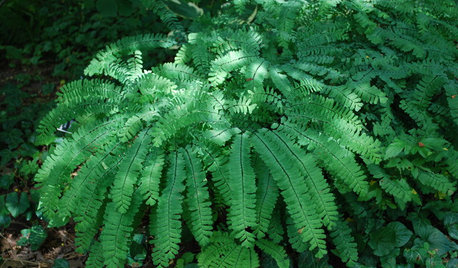
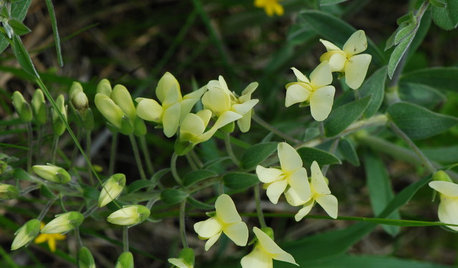
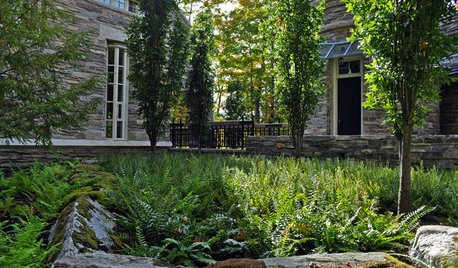
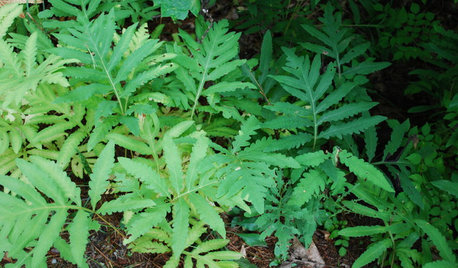
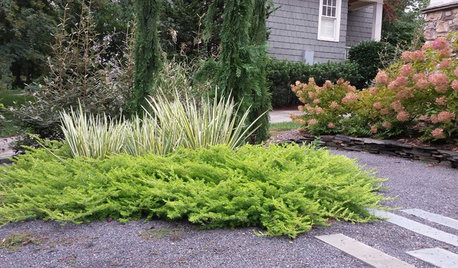
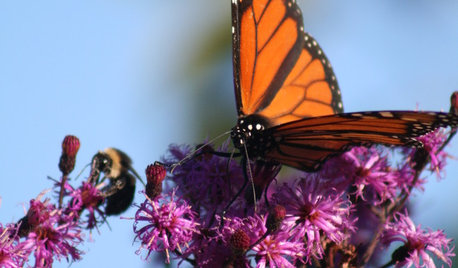
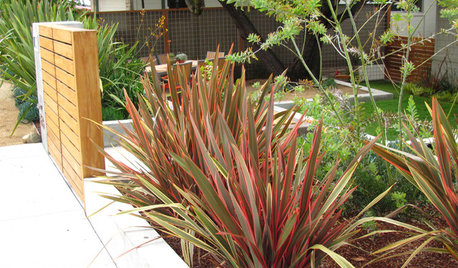






elkwc